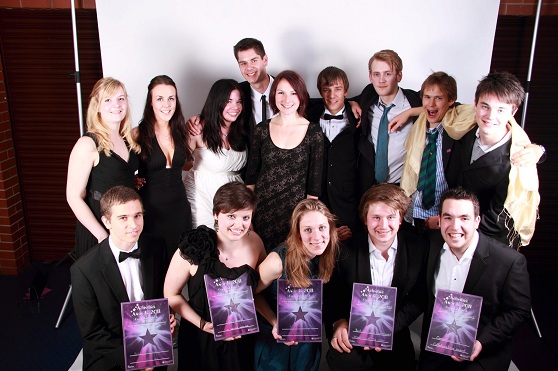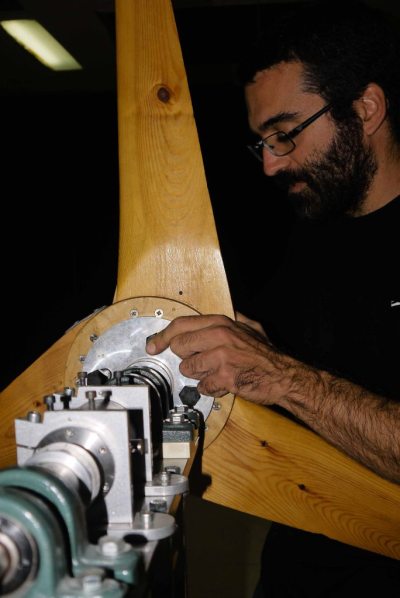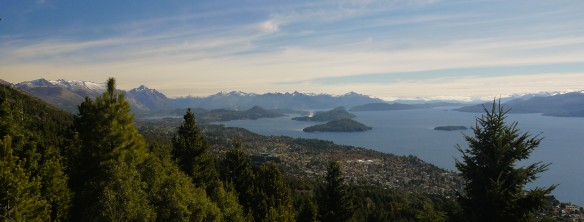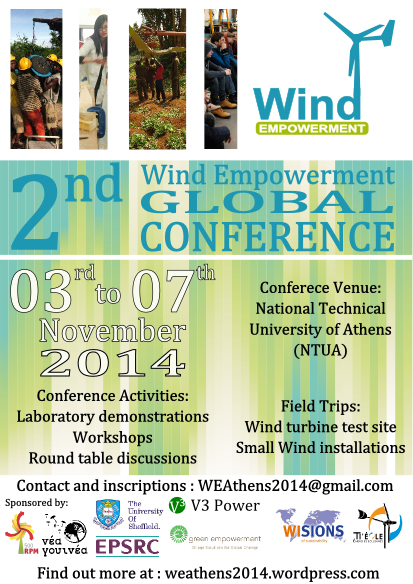Today I went to Durham to attend the relaunch of their Energy for Development group. Durham are lucky enough to have an Energy Institute, which spans the academic disciplines and links together researchers from all over the university. They have also recently launched an interdisciplinary MSc entitled “Energy and Society”, which the promotional literature I received boldly states has been designed to “combine insights from social and technological sciences” to address “the word’s energy challenge,” which “will not be solved by technology alone.” The Energy for Development group was first established in 2012 as the Durham home for the Low Carbon Energy for Development Network (LCEDN).
Joshua Kirshner shared his experiences from the ESRC Rising Powers project with the interdisciplinary audience. The project investigates the influence of emerging economies (specifically Brazil, India and China) on the low carbon transitions occurring in low income countries and Josh’s research offers a case study of this effect in Mozambique. Among the many renewable energy projects he visited were a selection of hydraulic grinding wheels, which had been abandoned by their Portuguese former owners abandoned their fazendas during the civil war in the 70s/80s but had recently been repurposed as hydroelectric schemes. He mentioned that maintenance, the familiar foe facing the sustainability of so many decentralised energy systems, was severely limiting the impact of many of the projects he had visited. He also discussed an unexpected finding of his research: that the market for small scale renewable energy systems in Mozambique had been strengthened by the recent establishment of Nigerian-owned small businesses selling electrical goods and consumables – a trend that is reportedly occurring all over Africa.
Ben Campbell also shared his ongoing work on biogas digesters in the sub-alpine transitional forests in central Nepal. An initial scoping study was conducted in 2011 (Campbell & Sallis, 2013), during which, Ben (an anthropologist) and Paul Sallis (an engineer) visited a yak cheese factory in Langtang National Park with the aim of assessing the viability of using biodigesters fuelled primarily by yak dung to provide the heat energy input required to pasteurise yak’s milk. Ben points out that there is a certain synergy between “the indigenous Himalayan practices of seasonal transhumant livestock keeping, and the functioning and maintenance requirements of a biogas installation running on cattle dung.”
Currently fuelwood is used, however this is in conflict with the conservation agenda promoted by the national park status. In 2012 I saw one of the 300,000 household biodigesters that are currently in use in lowland Nepal, where similar conservation efforts have lead to the successfully introduction, promotion and dissemination of the technology on a large scale. However, the major challenges with replicating this in Langtang National Park relate to the cooler temperatures (which reduce the efficiency of the digesters due to the reduced microbial activities at these temperatures) and the lack of sufficiently fine locally available sand for construction material.
I am particularly intrigued by the interdisciplinary collaborative aspect of this work, as its not often you hear of anthropologists and civil engineers working together. Ben refers to the collaboration of ethnographers and engineers specifically as “ethno-engineering” and more generally highlights this as an example of “’problem-oriented’ collaboration and quotes Wellbery (2009):
“The interesting feature of this sort of collaboration is that the object of study exists simultaneously on two planes: as the theoretical object constituted within each of the participating disciplines and as the object of the informal (everyday or ‘natural’) language that specialists employ as their koine.”
In this case, Ben is playing both the role of the specialist (in his case, an anthropologist) and by initiating the project with the view to including “other disciplines” in “follow-up research”, he is also playing the role of the interdisciplinary interpreter. He is taking a systems level view, identifying the problem and the specialisms required to solve it. What is more, he is translating between the language of social scientists and engineers and academics and practitioners. Whilst this may sound like a trivial task, I know that from my personal experience of conducting a multidisciplinary PhD and coordinating the transdisciplinary Wind Empowerment association, that it is only too easy for great ideas to get lost as they are shared with the group in the language of the specialists who came up with them, yet sound like techno-jargon to the rest of the group.
Referring to the design of micro-hydro systems, Arthur Williams points out that:
“Good design of a complete pico- or micro-hydro project requires skills in civil, mechanical and electrical engineering. Sometimes engineers who specialize in one of these three disciplines believe that the other issues are unimportant or trivial, but in fact there needs to be a balance between them.” Arthur Williams in Engineering in Development: Energy
Whilst I agree with Williams’ viewpoint regarding the tendency of specialists to put on the blinkers and ignore all but the issues relating to their specialism, I think that he has oversimplified reality into a technical world that is uninhabited by people. In fact, the technology itself is only one part of a complex socio-technical system that is designed to improve the quality of life of people living in a particular place. If it is to succeed, both the technical and social components of the system must be adapted to that particular local context.
For example, even the most technically efficient project can fail soon after it is installed if the community technician that was trained to operate and maintain the system finds a better paying job in the city and leaves without passing his knowledge on to a suitable successor. Yadoo (2012) offers an excellent summary of these issues from her PhD case study work on delivery models in Nepal, Peru and Kenya.
Brian Ferry, an engineering graduate volunteering with AsoFenix in Nicaragua told me that after revisiting a number of their micro-hydro installations, he thought that the most important factor in the sustainability of such installations was the distance between the powerhouse and the house of the community technician. In communities where this distance was large, check-ups on the machinery were infrequent and as a result, small problems that could have easily been detected and resolved if a suitably trained person were present developed into major catastrophes that put the system out of action for days, weeks or even months.
Campbell (2013) quotes Adams and Jeanrenaud (2008):
“We must break down the barriers between disciplines, the tawdry trade in academic prestige and the sterile politics of establishment thinkers and their routine-bound ideas. We must embrace informal as well as formal learning, oral as well as written knowledge, poetry as well as mathematics, natural history as well as economics, ethics as well as engineering.”
People came up with the academic disciplines, however the only way in which we will be able to solve the major challenges facing the human race today is by breaking down these artificial barriers and working collaboratively to share knowledge and come up with innovative solutions to real world problems. I was pleased to hear Ben close the event by advising us to pencil in the 26th/27th March 2014 as the provisional dates for the next LCEDN conference, which will be hosted in Durham, as this will provide a fantastic opportunity for exactly this interdisciplinary dialogue. Hope to see you there!
References:
- Adams WM, Jeanrenaud SJ. 2008 Transition to sustainability: towards a humane and diverse world. Gland, Switzerland: IUCN.
- Campbell B, Sallis P. 2013 Low-carbon yak cheese: transition to biogas in a Himalayan socio-technical niche. Interface Focus 3: 20120052. http://dx.doi.org/10.1098/rsfs.2012.0052
- Sumanik-Leary J., Delor M., Little M., Bellamy M., Williams A. & Williamson S. 2014, Engineering in Development: Energy, Engineers Without Borders UK, London, UK.
- Wellbery D. 2009 The general enters the library: a note on disciplines and complexity. Crit. Inq. 35, 982–994. (The fate of disciplines Edited by James Chandler and Arnold I. Davidson). (doi:10.1086/599588)
- Yadoo A. 2012 Delivery models for decentralised rural electrification: case studies in Nepal, Peru and Kenya. London, UK: International Institute for Environment and Development.















